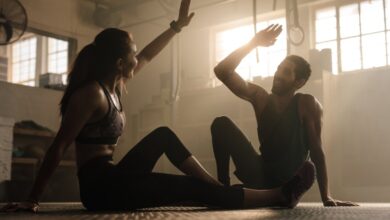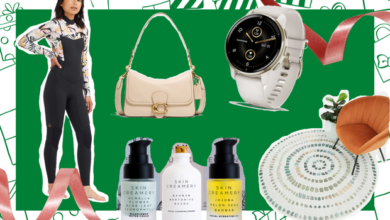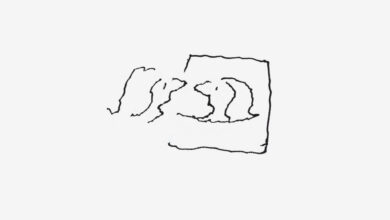Oura Ring 3 Review: A missed opportunity for wearable tech

There couldn't be a better time for wearable technology to shine. In times of Corona, we are all worried about our well-being. As such, wearable computers with tiny sensors that provide insight into our health seem particularly useful.
One such fascinating device is the third-generation Oura Ring, which was unveiled last November. It's a tiny $300 health-monitoring device that's worn on a finger like it's a piece of jewelry.
According to Oura Health, the ring offers a unique ability to measure tiny changes in body temperature to help women accurately predict their menstrual cycles and potentially identify when a person is becoming ill. That could even reveal early symptoms of Covid-19, the company said.
Who wouldn't want that these days?
The Oura Ring has also made a splashy debut. You may have seen it in a recent episode of And Just Like That, the Sex and the City reboot. Prince Harry, Kim Kardashian and Jennifer Aniston have been spotted with one. And ads for it have popped up on Instagram and other social media, portraying the ring as a replacement for devices like the Apple Watch.
Despite all the hype, I'm disappointed to have to report after two weeks of wearing an Oura that it was a disappointment. The ring wasn't able to accurately measure basic metrics like my steps, which raised broader questions about my general health metrics. (More on that later.) And while the charts on my heart rate and sleep patterns certainly looked decent, I didn't feel any more enlightened when it came to my overall health.
I also can't confirm if the Oura is able to detect Covid-19 or any other disease as (thankfully) I didn't get sick.
For a second opinion I turned to Dr. Ethan Weiss, a cardiologist at the University of California, San Francisco, who owns an older version of the Oura Ring, which he used to track sleep, body temperature, and fitness activity. dr Weiss said he stopped wearing it years ago.
"It didn't give me anything that I needed to help me," he said. “A lot of these technologies are looking for problems to solve. This is one of them.”
There might be some people who would like the Oura Ring – body hackers and competitive athletes striving to optimize their fitness – but I wouldn't recommend it for most of us.
Getting started with an Oura ring is a multi-step process. First, you order a free sizing kit from the company's website to measure your finger. Then tell the company your size. When the ring arrives, place it on a dock to charge and sync with a smartphone app. After wearing it, it takes about two weeks for the software to calculate the base values of your health data and make accurate estimates.
After the first week of testing, something unusual happened. A relative needed help in an emergency, so I hopped on my motorcycle and rode 50 miles to his house.
After driving home, I opened the Oura app. They said I ran 20 miles. That was obviously wrong. I had only run a mile that day while taking my dogs for an afternoon walk.
It was clear what had happened. The Oura had incorrectly recorded part of my 100 mile motorcycle ride as steps.
updated
Jan. 26, 2022 at 5:00 p.m. ET
A quick web search revealed that Oura customers complained about this issue with the previous version of the ring last year. The company's response at the time, published on Reddit, was that the ring incorrectly recognized "excessive exercise" while riding a motorcycle as a fitness activity, and it suggested removing the ring and putting it in a pocket while riding a motorcycle.
Chris Becherer, product manager at Oura Health, told me that the company is aware of the problem and is working on a solution. He suggested that in the meantime I could go back and delete workouts to let the app know I wasn't running.
That did not work. The app had permanently recorded my movements as walking and the data could not be deleted. I ride my motorbike regularly, including for errands around town, which meant nearly a week of activity data was ruined. Having to manually edit my data would also have defeated the purpose of an automatic tracker.
For comparison, I also wore an Apple Watch when testing the Oura. Even after my 100-mile trip, the Apple Watch correctly reported that I'd only walked about a mile and hadn't moved much that day.
The coronavirus pandemic: important things to know
Map 1 of 4
Around the world. The European Union has recommended that residents traveling within the bloc and who have been vaccinated or recovered from the virus should not be subject to additional restrictions such as testing or quarantine. In China, officials reported a case inside a bubble set up to isolate Olympic competitors from the rest of the country.
Days later, I wore the Oura again as I rode my motorcycle to the gym. The app reported that I'd walked about six miles in 3,500 steps.
The good
Some aspects of the Oura are interesting. The ring's battery lasts about seven days, much longer than devices like the Apple Watch, which need to be charged every other day. This longer charge means the ring can stay on your body longer, allowing it to collect more data about you over time, including detailed information about your heart rate and sleep.
Each day, the app adds these different measurements together to calculate a "readiness" score. A high readiness score indicates that you have recovered well from the previous day's activities. My readiness readings were probably generally inaccurate due to my motorcycle riding – but for non-riders who are athletes, this could be a useful way to determine whether to put in a hard workout or rest for the day.
I also liked the way the Oura app visualized sleep data. It showed a chart showing when I was in different stages of sleep and when I was awake. It also showed my lowest heart rate while sleeping – a higher heart rate could be the result of stress or a late meal. Finally, the app offered advice: As bedtime approached, the software recommended against caffeine and alcohol consumption in order to sleep better.
However, at the end of the experiment, I wondered if I really needed technology to be aware of my habits and my health. Once I removed the Oura and stopped checking the app, I didn't feel like I missed anything.
bottom line
Aside from my experiences, Oura's biggest failure is reflected in customer feedback. The second Google search result for "Oura Ring" is a collection of mostly negative customer reviews for the product. Dozens of angry customers complained about a support team refusing to answer questions or solve problems.
That indicated that Oura Health had underinvested in customer support. That's something I hate to see. How a company treats its customers is part of the experience of owning a product, and a brand's reputation for service is always in the back of my mind when I review products.
Mr. Becherer confirmed the negative feedback and said that as the company continued to develop its product, it was struggling to build up its customer service. He said the company was unprepared to handle the volume of customer inquiries after recently adding a subscription plan that asked customers to pay $6 a month for the app's services after a six-month trial period. (Previously, the software features were free.)
"It's getting better," said Mr. Becherer about the relief efforts. “We monitor the stuff very closely. It was a very heavy burden.”
Conclusion: Let's wait and see if this product improves. Right now there is a cheaper way to find out if you have Covid-19: rapid at-home test kits, which the US government has started offering for free.



